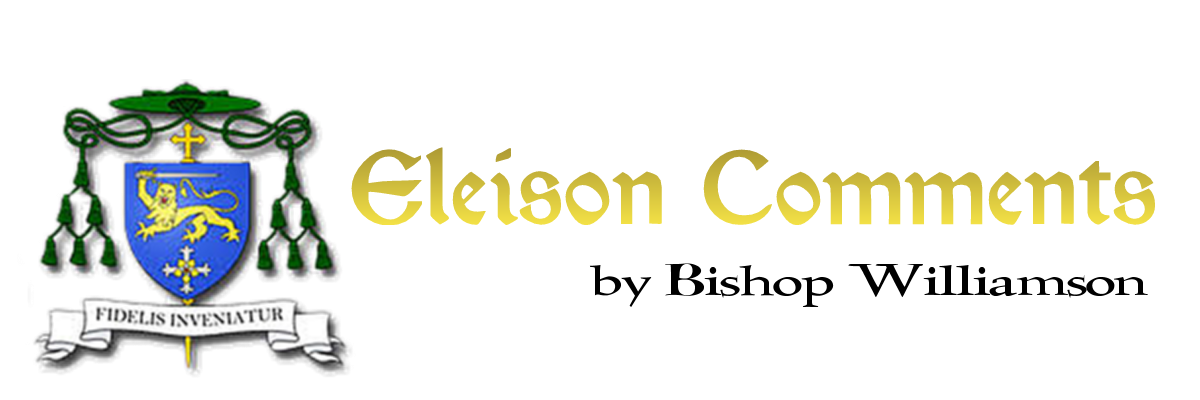AGAINST SEDEVACANTISM
AGAINST SEDEVACANTISM on December 28, 2024
But law must follow reality close behind.
The controversy over the resignation by Benedict XVI from the Papacy in February of 2013 continues to feed the argument over the vacancy of the Apostolic See – was that resignation valid or not? If it was valid, then the ensuing election of Pope Francis was not invalidated by Benedict still being in any way the valid Pope. But if Benedict’s resignation was doubtfully valid, then a doubt is left hanging over all Francis’ subsequent papacy, because Benedict only died in 2022 after Francis had acted as Pope for the space of nearly ten years. In the autumn of last year Bishop Athanasius Schneider wrote a most interesting article, accessible on the Internet, giving precious principles on the whole dispute of whether the Apostolic See (Latin “sedes”) is vacant or not.
It may seem an idle dispute, but it is not. The Catholic Church is a worldwide organisation, strictly hierarchical, in which all parish priests depend upon valid diocesan bishops for their valid appointment to parishes, and those bishops depend in turn upon a valid Pope for their valid appointment to their dioceses. For the Church to be able to function, its head must be really existent, clearly identified and universally accepted. Of course several times in Church history the identity of the Pope has been disputed, notably during the Great Western Schism from 1378 to 1417, which saw at its end not just two but three candidates all claiming to be Pope. However, all Catholics knew that more than one Pope was most harmful to the Church, so the Schism lasted only 39 years.
In that dispute, it is precious to observe how the Church judged of the validity of the popes in question. On the one hand Urban VII was duly elected in Rome in the papal conclave of 1378 amid huge pressure and threats, but he was accepted and recognised as Pope by all the cardinals who had elected him. The Church has come to see in him and in his successors the line of true and valid Popes. On the other hand, a few months later, French cardinals counter-elected a Frenchman as Pope Clement VII, who set up the Avignon papacy in Southern France. This line of “Popes” the Church has come to condemn as anti-popes. What is to be observed from this example and several others, especially in the Middle Ages, is that for a Pope to be valid the letter of the law is less important than the absolute need for the Church to have a single, visible, recognised and certain head.
Thus Gregory VI bought his papacy in 1045 for a large sum of money, so that his election was strictly invalid, yet the Church has always recognised him as a valid Pope. In 1294 Pope Celestine V doubtfully resigned and Boniface VIII disputedly succeeded him, yet both events were “healed at the root,” or made valid afterwards, by their being universally accepted by Catholics, clergy and laity. This doctrine of an event, illegal at the time but being made legal afterwards, the Church applies to marriages and to papal elections, under certain conditions. For papal elections those conditions are that the new Pope should be immediately accepted as Pope by the Universal Church. This was surely the case of Pope Francis, when he greeted the crowd from a Vatican balcony overlooking St Peter’s Square just after his papal election, with all the election’s possible canonical faults.
As for the disputed or doubtful resignation of Benedict XVI, opinions may differ, and the Church may decide with Authority what it meant, only after the Church emerges at last from the unprecedented crisis brought about by the splitting of Catholic Authority from Catholic Truth at the Second Vatican Council. However, based on the realistic principles laid out by Bishop Schneider in his article, it does not seem difficult to conclude that that resignation was both doubtful in itself and harmful in practice to the Church.
Doubtful in itself, because God designed His Church as a monarchy, or rule of one, and not as a diarchy, or rule of two. God obviously meant His Vicar, or stand-in, to have at his disposal in Rome a whole aristocracy of officials to help him to rule the worldwide Church, but of that aristocracy he is the undisputed sole king. And harmful in practice, because Benedict’s distinction between “munus” (office) for himself and “ministerium” (ministry or work) for Francis, did not clearly exclude his own continuing to participate in the rule of the Church. However, who did rule the Church from Benedict’s resignation to his death? Not Benedict. And when Benedict died – was there a papal conclave? No. It is Francis who has been Pope, from 2013 until now.
Kyrie eleison.
